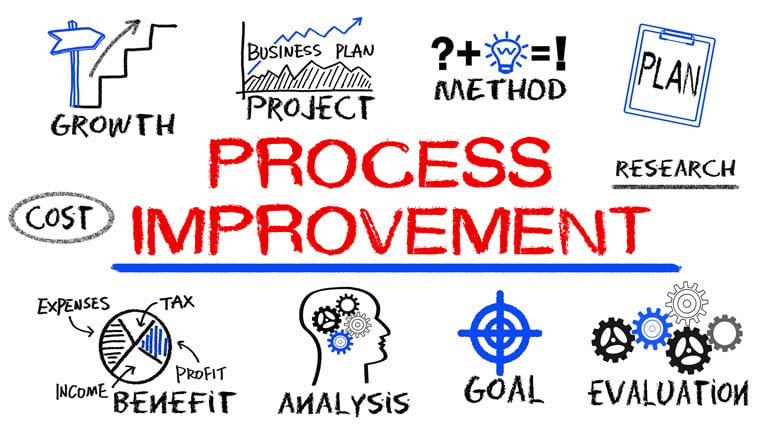This post was written by Chuck Boyd, business development director for Beamex.
You probably use dozens of business processes every day. When processes work well, they can significantly improve efficiency, productivity, and customer satisfaction. You have also likely realized the results of inefficient processes that cause frustration, delays, and financial loss. That is why it is so important to improve processes that are not working well.
Processes can be formal or informal. Formal processes are documented and have well-established steps. Informal processes are more likely to be ones that you have created yourself, and you may not have written them down. These different kinds of processes have one thing in common: they are designed to streamline the way that you and your team work.
Keep in mind that you will need to improve most processes at some point. New goals, new technology, and changes in the business environment can all cause established processes to become inefficient or outdated. In practice, few organizations have the luxury of redesigning their processes from “a clean sheet of paper.” People, equipment, and business knowledge cannot be easily scrapped.

The path to change can be a stumbling block if we assume technology is independent of the environment and organizational structure in which it is to be implemented. By some estimates, 70 percent of such projects fail to reach their intended goals. The program that seeks to become a “house of quality” can turn out to be a “house of cards” without recognition of interdependencies among technology, processes, and people. Manufacturers cannot, and will not, be experts in every aspect of software that can improve their businesses, so they must find the most suitable system and, most importantly, the best vendor as a partner to guide them through the implementation process.
Let’s look at a calibration system implementation where 70 to 80 percent of the implementation is focused on process and business culture and a relatively small portion on the technology itself. The first step is to outline a system implementation process. There are a few overarching fundamentals:
- There will be a large number of interrelated tasks, carried out in a particular sequence, with decisions being made throughout.
- A proven implementation model will yield quicker results than developing a model from scratch.
- The project must be overseen by a dedicated project manager with committed involvement by key resources.
- Poor planning and inadequate resourcing are the cause of problems such as scope creep and budget and schedule overruns.
You can successfully implement a new calibration process by following a well-defined, step-by-step implementation process:
1. Initiation: Define the entire framework for the project. Define the scope of the new system and launch date, appoint a project team, prepare a project plan, define change management procedures and testing/approval procedures, and establish the roles and responsibilities of both the manufacturer and vendor.
2. Process blueprinting: Map the existing calibration process and reengineer it for the target system. Explore each phase in detail, as some processes may have substeps that you are not aware of. It is critical to consult people who use the system regularly, as well as cross-functional experts such as information technology, compliance, and quality. At this point, the project can still be canceled.
3. Specification: Using the blueprint as the basis, define the user requirements, functional design, and test specifications. In this step, it is imperative that the manufacturer and vendor clearly understand the technical specifications and functionalities they are agreeing to.
4. Execution: Execute the plans prepared during the specification phase. This phase is where change management procedures may be used.
5. Deployment: Deliver all software, equipment, and documentation as well as the customer’s acceptance of delivery. Train target groups, and complete and make standard operating procedures, work instructions, and process descriptions available. The system is transferred from the project team to the operational team.
6. Operation: Use the new system in production and realize the improved process. Support agreements become effective.
Efficient business processes could not be more important in the current climate of competitive global markets, subdued demand, and competitive pricing. Where processes heavily involve interaction with the workforce, such as the calibration implementation example, efficiency becomes even more critical. As a final note, there is no end point; optimizing business process efficiency will always be an ongoing process.
About the Author Chuck Boyd, business development director for Beamex, has been involved in software development, system implementation, and business development roles for the past 29 years. Boyd was a business system analyst on software development projects for 10 years, where he was a communication conduit between the business and IT. Today, Boyd manages key accounts and market development in the southeastern U.S.
Chuck Boyd, business development director for Beamex, has been involved in software development, system implementation, and business development roles for the past 29 years. Boyd was a business system analyst on software development projects for 10 years, where he was a communication conduit between the business and IT. Today, Boyd manages key accounts and market development in the southeastern U.S.
A version of this article also was published at InTech magazine.



